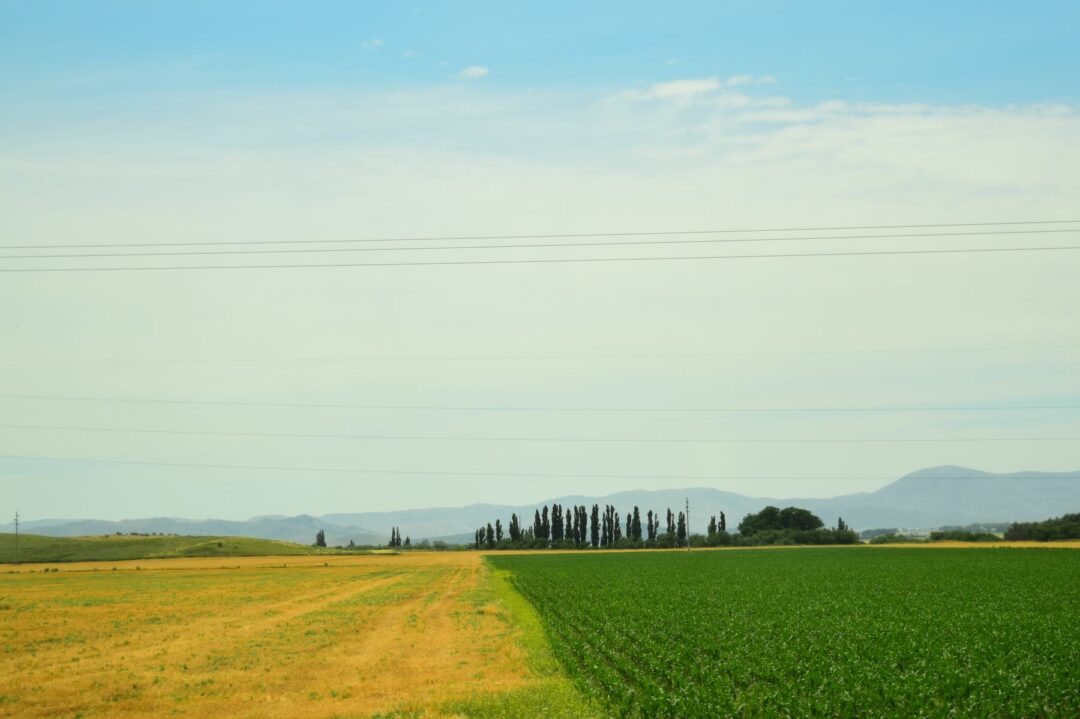Climate Change and Design in primary schools: creative learning for complex problems

 This article has been published as part of the Rethinking Curriculum project, kindly funded by The Helen Hamlyn Trust.
This article has been published as part of the Rethinking Curriculum project, kindly funded by The Helen Hamlyn Trust.
Kimberly Safford, Honorary Associate, The Open University, and Trustee of Climate
Intervention overview
Climate Change All Change is a charity that places professional designers in primary schools. The designers are from a range of sectors, such as architecture, fashion, landscape, engineering and food. Half a term, children, teachers and designers imagine the future and develop creative designs that respond to the climate crisis.
School leaders and teachers work with designers to develop a topic and activities that build on children’s prior learning and experiences, reflect the school ethos and link with other subjects across the curriculum.
Here are some recent examples:
- In Bristol, children explored the connections between architecture and forestry. They visited the local forest, observed natural habitats and created dens for animals. They learned about timber construction in practical workshops, using found objects and modelling materials to make maquettes of buildings. The children then planned the future development of a local brownfield site, creating a haven for animals, wildlife and people.
- In Retford, Nottinghamshire, children explored synthetic and natural textiles in hands-on activities. They learned about innovative fashion with new materials, such as mushroom leather and algae fabric. They designed outfits for extreme climates: a desert, an ice age and a water-world. From drawings, the fashion designer made up one outfit for an actual human model.
- In Manchester, children learned about landscapes and eco-systems, and how plants and animals adapt to changing environments. The children imagined how animals and plants today might need to mutate to survive extreme climate changes. Their designs were made into large, illustrated manuscripts of ‘improbable botany’ and ‘unlikely animals’.
- In two London schools, children focused on neighbourhood housing and infrastructure, using carbon-free energy and sustainable materials. They planned how local buildings, streets and transportation could be transformed and repurposed to cope with extreme weather. In these design projects, children prioritised community, play, families and services.
Teamwork and problem-solving are features of children’s learning in Climate Change All Change. Sharing and presenting are also key components, as children display their work in a school assembly, school social media, a community event or in a community exhibition space. Children receive feedback from professional designers and see their ideas rendered by professionals in large-scale and digital formats.
Aims
Schools do much to inform and inspire children to reduce, reuse, recycle and protect the natural environment. Climate Change All Change aims to build on this work, focusing on the design implications of climate change, to address these issues:
Building design skills for the future
Faced with climate and biodiversity emergencies and high levels of social and economic inequality, the need to design – and redesign – is urgent. Design and technology is a required curriculum subject in primary schools, but there are no accurate statistics for the uptake and nature of D&T activities. The number of young people taking D&T GCSEs in secondary schools has declined sharply: from 430,000 in 2003 to 78,000 in 2024. The number of D&T-trained subject teachers has declined from 15,000 in 2009 to 6,000 in 2024 (Ryan, 2024).
Children’s futures and employability
By the end of primary school, children have formed ideas about what they might be and do when they grow up. The UK government’s strategy for sustainability and climate change in education (DfEDepartment for Education - a ministerial department responsible for children’s services and education in England, 2023) refers to children’s future employability in the context of climate change, in careers that support the transition to net zero, the restoration of biodiversity and a sustainable future.
Promoting climate literacy for children and teachers
It is important to promote the UK government’s strategy that children should learn about the ‘causes and impacts of climate change’ and about ‘the importance of sustainability’ (DfE, 2023).
Supporting teacher knowledge and confidence
A survey of over 8,000 teachers found that 92 per cent are concerned about climate change, 89 per cent think that climate change is relevant to their subject area and 70 per cent feel that they haven’t received adequate training to educate learners about climate change (Teach the Future, 2023).
Learning about climate change through art and design
The climate crisis can make children feel anxious, depressed and angry (Clayton et al., 2023). Art and design offer potential to create new images and metaphors and for climate learning (Bentz, 2020).
Engaging school leadership
There is a need to support school leaders and subject leads to foster school structures, culture and teacher agency in relation to climate change education (Rushton et al., 2024).
Outcomes and impact
Since 2020, over 1,000 children have experienced the Climate Change All Change programme (see Appendix). According to the most recent external evaluation:
‘The commitment and passion of incoming experts, together with their expertise in a topic, can clearly motivate students and teachers. Moreover, the specialist nature of a partnership encourages schools to carve out time to the project, creating space for children to engage… As a result, gains in children’s learning, and in their attitudes to a topic, are likely to increase. [Several children] … expressed views about how the project had given them a better understanding of climate change and a desire to make a difference:
“I didn’t know anything about climate change until [the teacher] was explaining it and we were talking about it over and over with [the designer]” (Student focus group, School D).
Notably, the programme was also perceived to be beneficial from the perspective of the teachers and the designers:
“I think I now feel more hopeful about the future. And I think that’s what children need to be feeling, because otherwise they’ll feel if it’s going to be like this, we can’t do anything. I think it gave them power. And I think that’s what’s really strong” (Teacher interview, School B).
“This feels like the most significant project of my year” (Designer interview, School E).’ (Wood et al., 2024, p. 43)
External evaluators also observed that children working ‘as a designer’ and having input from professionals is a powerful way in which to showcase future careers:
‘“I enjoyed it as it’s opening up new jobs. If I didn’t know about sustainability or fashion designers, I wouldn’t have liked to be one. If I hadn’t known what it was… it shows children can do what they want, what they put their mind to” (Student focus group, School A).’ (Wood et al., 2024, p. 43)
School leaders have observed that learning design skills and climate change concepts in a creative, cross-curricular project has promoted new understanding and new skills for children, and a sense of responsibility:
“We have seen how mature and capable the children can be when they are inspired and encouraged” (Teacher interview, School C).’ (Wood et al., 2024, p. 45)
Challenges in uptake and implementation
- Schools must make time for creative partnerships with external organisations. School leader support and involvement and close planning with teachers are essential.
- Climate Change All Change content and activities must be accessible to the full range of learners and teachers.
- Teachers may lack confidence in mediating up-to-date climate science concepts and cutting-edge design concepts.
- Schools may lack space and resources for hands-on making activities.
- Designers often require pedagogical support and guidance.
References
Bentz J (2020) Learning about climate change in, with and through art. Climatic Change 162: 1595–1612.
Clayton S, Manning CM, Hill AN et al. (2023) Mental health and our changing climate: Children and youth report 2023. American Psychological Association and ecoAmerica. Available at: www.apa.org/news/press/releases/2023/10/mental-health-youth-report-2023.pdf (accessed 16 August 2024).
Department for EducationThe ministerial department responsible for children’s services and education in England (DfE) (2023) Sustainability and climate change: A strategy for the education and children’s services systems. Available at: www.gov.uk/government/publications/sustainability-and-climate-change-strategy/sustainability-and-climate-change-a-strategy-for-the-education-and-childrens-services-systems#action-area-1-climate-education (accessed 16 August 2024).
Rushton EAC, Dunlop L and Atkinson L (2024) Fostering teacher agency in school-based climate change education in England, UK. The Curriculum Journal 00: 1–16. DOI: 10.1002/curj.253.
Ryan T (2024) Chief Executive Officer, Design and Technology Association, personal communication, 24 April 2024.
Teach the Future (2023) Written evidence submitted to UK Parliament (EDU0027). Available at: https://committees.parliament.uk/writtenevidence/120247/pdf (accessed 16 August 2024).
Wood L, King H and Glackin M (2024) Working with external partners to support climate change education through a focus on design. Journal of Emergent Science 26: 41–46.

 This article has been published as part of the Rethinking Curriculum project, kindly funded by The Helen Hamlyn Trust.
This article has been published as part of the Rethinking Curriculum project, kindly funded by The Helen Hamlyn Trust.








